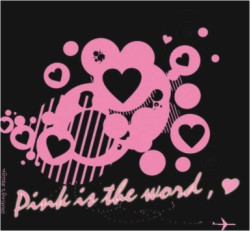
|
Home |
Issues | The Daily Star
Home
|
|
|
After sunset
Dhaka is neither a city of skyscrapers nor does it have the dazzle of billboards with flashy advertisements. It's not only a metropolis of rugged urbanized settlements but also a place of spiritual significance. This city has everything. From the posh uptown area of Gulshan to downtown Farmgate, Dhaka deserves a title of a cosmopolitan city. But the strange thing is, the description of the beauty of this city is always bound with daylight. But there is another side of this city that reveals itself after the sunsets. Have you ever silenced your footsteps while walking on the pavement of this big city at night? Or parked your car to take a look through the tinted windshield? Next time just take a look and you will be amazed. Within the hustle of busy traffic and neon lights this city takes on a handsome look at night. The nighttime view of the Dhaka city is not a single experience; it is a mixture of excitement, serenity and a little bit of annoyance.
The amazing thing is that each one of those lights on in the buildings represents at least one person or a story with unknown numbers of real life characters. Some of them are working; some of them are talking, breathing and living their life as it is. This beauty mentioned here is not only a part of Dhaka city it is a lifestyle of it's people. These are the signatures that define the capital of Bangladesh with unique features. The truth is, it is too easy to forget the outside world when we are just focusing on our problems. Until we see a city skyline like this at midnight, twinkling like stars in the sky, you realize there really are a lot of people out there. So take a moment and check out Dhaka in the dark. By Zabir Hasan Pink- a biography  SHE is so pretty that everybody loves her presence, so popular that she has her own hate club and yet so classy that renowned brands use her to promote their products. SHE is so pretty that everybody loves her presence, so popular that she has her own hate club and yet so classy that renowned brands use her to promote their products.
Who is she? Where does she come from? She is none other than our favourite colour Pink, a descendant of the Red family. Since childhood, a girl dedicates her life to the colour Pink. It starts with little things such as a pencil case and backpack but as she grows older her devotion towards Pink gets even stronger, the dominance of Pink can be observed all over her belongings. A bond that starts with just dresses and dolls reaches her laptop and walls. As much as it's fun being popular and having so many followers can be flattering, but like they say all good things come with a price, the number of haters Pink has is enormous. The first ones to make the list are the boys. There is something about Pink that makes the boys twitchy and angry. According to them Pink is too “bright, happy & girly” (so typical!). Although past few years some wise men has been trying to prove this notion wrong by sporting Pink because apparently it brings out their brave and bold personality, a good way of proving their masculinity (and they say women are confusing!). The hatred of the men towards Pink can be understood but the second hater on the list is a surprise. Yes! It's Pink's fellow mate the colour Green. Green is constantly stealing the “lime”light trying to be the new pink (that betrayer!). Despite of all the love and hate, Pink has come a long way. Now she has even gotten herself into modelling. Electronic giants are using Pink on the shells of their products to attract the female customers. Her new career as a model has proven to be successful as the demand for pink accessories has gone up. Once upon a time Pink, the colour, was discarded by the fashion world and labelled as tacky, a colour that has been a victim of male oppression has struggled and overcome many obstacles to reach where it is now. It has indeed been a long journey for Pink, she deserves appreciation and respect. By Fariba Rakhsanda Book review Fever Pitch '. . . so please, be tolerant of those who describe a sporting moment as their best ever. We do not lack imagination, nor have we had sad and barren lives; it is just that real life is paler, duller, and contains less potential for unexpected delirium.' When novelist Nick Hornby saw his first dead body as a young boy of twelve, his horror was not one that stemmed from the macabre but from the thought that the unfortunate man had died in mid-season without knowing how the year had turned out for his side. It is a thought that haunts Hornby to the extent that he hopes to never suffer a similar fate. Welcome to Fever Pitch, Nick Hornby's bittersweet autobiography which portrays above all else how his fortunes are inexorably linked to that of his football team. As a morose young child, affected heavily by the divorce of his parents, Horby's lack of a father figure is filled out comprehensively by Saturday afternoon visits to Highbury to watch Arsenal play. Mind you, this was an Arsenal before the likes of Thierry Henry, Arsene Wenger and Cesc Fabregas. The 60's and 70's was home to an Arsenal team which was strictly “kick first-play later.” But as Hornby explains, you don't choose your team, your team chooses you. And God help him thereafter. Hornby dissects the fan's psyche and goes on to rationalize (or at least tries to) why grown men and women (in some cases) invest so much in something they have no control over. For him football and Arsenal becomes a passage of youth. The Gunners becomes a surrogate father, carrying him through disappointment and achievement alike; suspicious by its absence at crucial times, but there to cheer him up when all looks bleak in his life. It is a required reading for every football fan worth his salt. Fever Pitch is a book about football and how it affects and at times overwhelms us, how it provides us a conduit to hide our fear and despair and how at the end of it all remains as a constant. But the beauty of the book is in that it might not be about football at all. It is also about the pains of growing up and the disappointment that life can throw at a growing lad. To this end football is Hornby's canvas and he paints a detailed picture of life for a middle class lad in the late 20th century. Fever Pitch was voted the best sports book ever. It is a plaudit that Nick Hornby thoroughly deserves for coming up with a gem like this. In football analogies, it is an absolute screamer into the top corner from thirty-yards. By Quazi Zulquarnain Islam |
|
| home
| Issues | The Daily Star Home © 2009 The Daily Star | |